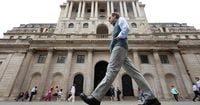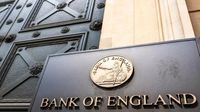The Bank of England has once again taken center stage in the United Kingdom’s economic drama, announcing on August 7, 2025, that it would cut its key interest rate from 4.25% to 4%. This move, the fifth reduction in the past twelve months, brings the base rate to its lowest level since March 2023, as reported by Reuters, BBC, and Bloomberg. But this was no routine decision. The nine-member Monetary Policy Committee (MPC) was split nearly down the middle, with a 5-4 vote—an unusually close call that required a second round of voting, highlighting deep divisions among the Bank’s policymakers.
At the heart of the MPC’s debate is a question that has dogged central banks worldwide: how to balance persistent inflation with a sluggish economy. According to BBC, British consumer price inflation jumped to 3.6% in June 2025, up from 3.4% the previous month, and is forecast by the Bank to peak at 4% in September—twice its official target. Despite this, the committee opted for a rate cut, aiming to support a faltering economy by lowering borrowing costs for households and businesses and hopefully spurring mortgage activity and investment.
Yet, the decision was anything but straightforward. Huw Pill, the Bank’s Chief Economist and one of the four dissenters, made his reservations clear in a presentation to business leaders. He warned, “There’s still a little bit further downward to go with Bank Rate. I think the pace at which those downward moves perhaps go forward is a little bit less clear than the pace that we’ve seen over the last year.” Pill argued that higher inflation could be more than a temporary blip, especially if it starts to alter the way businesses set prices and how workers negotiate wages. “If that’s more the driver of this increase in the upside risk to inflation, that might lead us to ... have to question whether the pace at which we’re reducing Bank Rate over the last year, a pace of one quarter-point cut every quarter, is that sustainable?” he added, according to Reuters.
The Bank of England’s governor, Andrew Bailey, echoed the need for caution. As BBC reported, Bailey stated that while interest rates are on a downward path, “future cuts would be made gradually and carefully.” The close vote and the Bank’s revised inflation forecasts have cast doubt on whether another rate cut will come before the end of the year. Investors, once expecting a further reduction in December, are now eyeing February 2026 as the more likely date for the next move.
Why is the Bank treading so carefully? The answer lies in the complex interplay between inflation and economic growth. The UK economy has been limping along, with rising unemployment, a continuous fall in job vacancies, and weak domestic demand. Mark Barrie, head of debt advisory at Azets, told the International Accounting Bulletin, “Today’s reduction makes sense, given rising unemployment, the continuous fall in job vacancies, sticky inflation, spiralling national debt, a dire fiscal outlook and persistent cost pressures since April on business, including the increases in national insurance contributions and minimum wage.”
But the inflation picture remains stubbornly challenging. The Bank’s own forecasts now show inflation not returning to the 2% target until the second quarter of 2027. The main culprit? Rising food prices and other one-off cost increases, such as regulated water bills, have kept price pressures elevated. According to Bloomberg, Pill warned that this “resurgence in inflation ... may linger for longer than expected, pointing to the impact on household expectations from climbing food bills.”
For millions of Britons, these high inflation rates have real-world consequences. Mortgage rates remain elevated, with the average two-year fixed mortgage sitting at 5% as of August 7, 2025, BBC noted. About 800,000 fixed-rate mortgages with interest rates of 3% or below are set to expire each year until the end of 2027, meaning many homeowners will face sharply higher borrowing costs. Credit card, loan, and car loan rates may also remain sticky, as lenders are often slow to pass on the benefits of lower central bank rates.
Savers, too, are feeling the pinch. The current average easy-access savings account rate is 2.67%. Any further cuts by the Bank could reduce these returns even more, affecting those who rely on interest income to supplement their living expenses.
Financial markets have responded to the rate cut in their own way. As CNBC and Financial Times observed, lower rates typically mean reduced returns on traditional fixed-income assets. This could prompt investors to seek higher yields in riskier assets such as equities and even cryptocurrencies. The Bank of England has acknowledged this potential shift, noting that previous rate reductions have led to increased trading activity in digital assets like Bitcoin and Ethereum, and could influence decentralized finance (DeFi) protocols and GBP-stablecoin activity.
Globally, the UK’s monetary policy is moving in step with other major economies, though not always at the same pace. The European Central Bank began cutting rates in June 2024, and the US Federal Reserve has made several reductions since late 2024, though it has recently paused. The international backdrop remains volatile, with US tariffs and conflicts in the Middle East adding to the uncertainty, as Governor Bailey has repeatedly warned.
The UK government, for its part, has welcomed the Bank’s decision. Chancellor Rachel Reeves expressed support, suggesting that government policies have helped foster greater economic stability. Still, businesses remain cautious. Nevil Durrant, CFO of the CFO Centre Group, told the International Accounting Bulletin, “The BoE must balance this inflationary picture with the sluggish performance of the UK economy over the last 12 months, declining business confidence and recent downward revisions by economic analysts in the growth prospects for the UK.” He added, “The reduction may, in the short term, encourage more businesses to borrow and invest, although those businesses will be looking at other macroeconomic factors and the degree of current uncertainty as bigger drivers in respect of any investment policies.”
Looking ahead, the Bank of England’s next moves are anything but certain. With inflation set to remain above target for at least another year and economic growth still fragile, every rate decision will be closely watched by markets, businesses, and households alike. The MPC’s internal divisions, as exposed by this latest vote, suggest that future decisions will be just as finely balanced—and perhaps just as contentious.
For now, the Bank’s cautious approach underscores the delicate policy environment it faces. As the UK continues to navigate persistent inflation, weak growth, and global uncertainty, the path forward will require both flexibility and resolve from the country’s central bankers.







